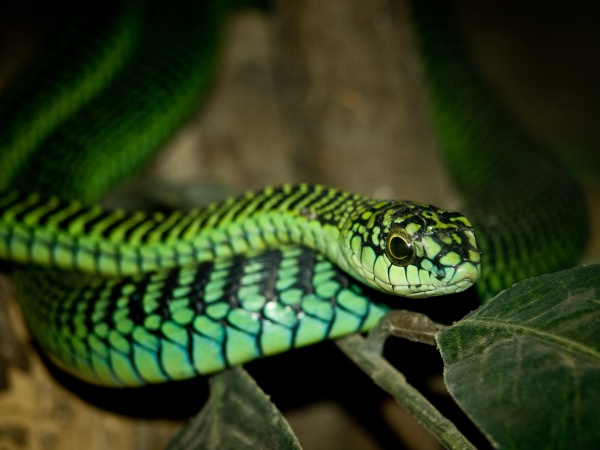Facts About Boomslang
The boomslang is a fascinating and highly venomous snake belonging to the Colubridae family. It is the sole species in its genus, Dispholidus typus, and its name translates to "tree snake" in Afrikaans and Dutch. The boomslang is closely related to other snakes in the Dispholidini tribe and has three recognized subspecies.
These snakes are quite large, typically measuring between 100-160 cm (about 3-5 feet) in length. They have distinctive features, such as large eyes and an egg-shaped head. Boomslangs are primarily green, with males often exhibiting black or blue edges on their scales. They are oviparous, laying up to 30 eggs in hollow tree trunks.
Boomslangs are diurnal, meaning they are active during the day, and they are predominantly arboreal, residing mainly in trees. Their diet includes chameleons, lizards, frogs, small mammals, and birds.
One of the most notable aspects of the boomslang is its highly potent venom, which is primarily hemotoxic. This means it can cause severe internal and external bleeding, along with symptoms such as headaches and nausea. The venom acts slowly, which can sometimes lead people to underestimate the seriousness of a bite. However, antivenom is available for treatment. Most bites occur when people try to handle or kill the snake.
While the boomslang is indeed dangerous due to its venom, fatalities are rare. Bites usually happen only when the snake feels threatened. The species has been well-studied, with documented cases of envenomation and the development of effective antivenom treatments.

 Mauritania
Mauritania